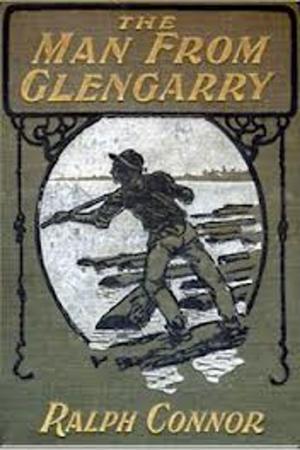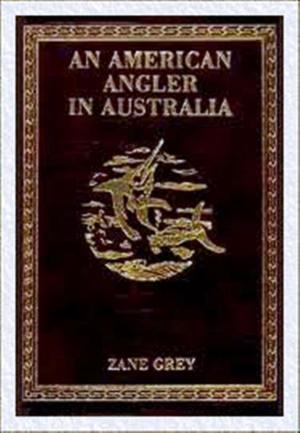The Wreck of the South Pole
And Other Strange Tales
Mystery & Suspense, Cozy Mysteries, Fiction & Literature, Classics| Author: | Charles Curtz Hahn | ISBN: | 1230000197660 |
| Publisher: | WDS Publishing | Publication: | November 18, 2013 |
| Imprint: | Language: | English |
| Author: | Charles Curtz Hahn |
| ISBN: | 1230000197660 |
| Publisher: | WDS Publishing |
| Publication: | November 18, 2013 |
| Imprint: | |
| Language: | English |
Readers may remember the story told by an ancient mariner which was published last November. This was an account of a cruise which Capt. Reynolds, of New London, Conn., made in the South Seas twenty-six years ago. This voyage, so far as the South Seas were concerned, ended at the South Georgia Islands, where the captain and his crew remained until driven out by the ice.
These islands are situated exactly 1,000 miles east of Cape Horn, with an oceanic current running directly from the southern end of the American Continent to them. Here is the most beautiful harbor in the world—the Cumberland. It is surrounded on three sides by lofty mountains which rear their heads straight upward 16,000 feet above the sea, and down whose sides five cataracts flow. But wild and rugged as are those mountain peaks and tempestuous as may be the ocean out beyond, no storms are ever felt within the harbor, although looking upward the sailor can see them raging around the mountain tops.
Resting on the bosom of the placid waters, his ship scarcely moving by the gentle waves, with golden sunshine falling all around, looking upward tornadoes, rain and snow will be seen raging among the upper cliffs.
But there is another harbor on this island of quite a different character.
Capt. Reynolds and his crew anchored in Frenchman's Bay and there found a house built of ship's cabin timber, every inch of which was carved with the history of four men, who had been lost off Cape Horn and their vessel carried by the current to this island. They had been lost twenty years before, and had lived in this house for seventeen years, according to the records which they carved upon its walls.
After the seal rookery had been visited, the captain organized a volunteer investigation party to explore the interior. Coming to the top of a mountain range, they let down John Sands, who was lost in the Arctic Ocean on the ill-fated Narvach, to find a path for them. He called back that he thought a way could be found, but they had better leave the rope hanging in case they were obliged to return by it. The whole party descended, but soon were obliged to repeat the performance, and when they reached the valley, half a dozen ropes were hanging down the mountain side.
It was well they left them, for on examining the valley into which they had descended, they found that it was walled in by precipitous mountains, and that this one point upon which they had stumbled by accident or by fate was the only place they could be crossed. And if those ropes had not been left, they probably would have died in that lonely place, for this cave was cut off from the ocean, as well as from the rest of the island. All along in front were breakers which rendered the approach of any boat impossible. The beach was thirty miles wide and was strewn with the wrecks of a thousand ships, which had been lost off Cape Horn and drifted to this place with the current. Once in this cove, it was impossible to leave it.
During the afternoon of the first day which the party passed in this place, one of those thrilling occurrences which sailors, in either the Arctic or Antarctic Oceans, are always on the lookout for, happened.
Readers may remember the story told by an ancient mariner which was published last November. This was an account of a cruise which Capt. Reynolds, of New London, Conn., made in the South Seas twenty-six years ago. This voyage, so far as the South Seas were concerned, ended at the South Georgia Islands, where the captain and his crew remained until driven out by the ice.
These islands are situated exactly 1,000 miles east of Cape Horn, with an oceanic current running directly from the southern end of the American Continent to them. Here is the most beautiful harbor in the world—the Cumberland. It is surrounded on three sides by lofty mountains which rear their heads straight upward 16,000 feet above the sea, and down whose sides five cataracts flow. But wild and rugged as are those mountain peaks and tempestuous as may be the ocean out beyond, no storms are ever felt within the harbor, although looking upward the sailor can see them raging around the mountain tops.
Resting on the bosom of the placid waters, his ship scarcely moving by the gentle waves, with golden sunshine falling all around, looking upward tornadoes, rain and snow will be seen raging among the upper cliffs.
But there is another harbor on this island of quite a different character.
Capt. Reynolds and his crew anchored in Frenchman's Bay and there found a house built of ship's cabin timber, every inch of which was carved with the history of four men, who had been lost off Cape Horn and their vessel carried by the current to this island. They had been lost twenty years before, and had lived in this house for seventeen years, according to the records which they carved upon its walls.
After the seal rookery had been visited, the captain organized a volunteer investigation party to explore the interior. Coming to the top of a mountain range, they let down John Sands, who was lost in the Arctic Ocean on the ill-fated Narvach, to find a path for them. He called back that he thought a way could be found, but they had better leave the rope hanging in case they were obliged to return by it. The whole party descended, but soon were obliged to repeat the performance, and when they reached the valley, half a dozen ropes were hanging down the mountain side.
It was well they left them, for on examining the valley into which they had descended, they found that it was walled in by precipitous mountains, and that this one point upon which they had stumbled by accident or by fate was the only place they could be crossed. And if those ropes had not been left, they probably would have died in that lonely place, for this cave was cut off from the ocean, as well as from the rest of the island. All along in front were breakers which rendered the approach of any boat impossible. The beach was thirty miles wide and was strewn with the wrecks of a thousand ships, which had been lost off Cape Horn and drifted to this place with the current. Once in this cove, it was impossible to leave it.
During the afternoon of the first day which the party passed in this place, one of those thrilling occurrences which sailors, in either the Arctic or Antarctic Oceans, are always on the lookout for, happened.















